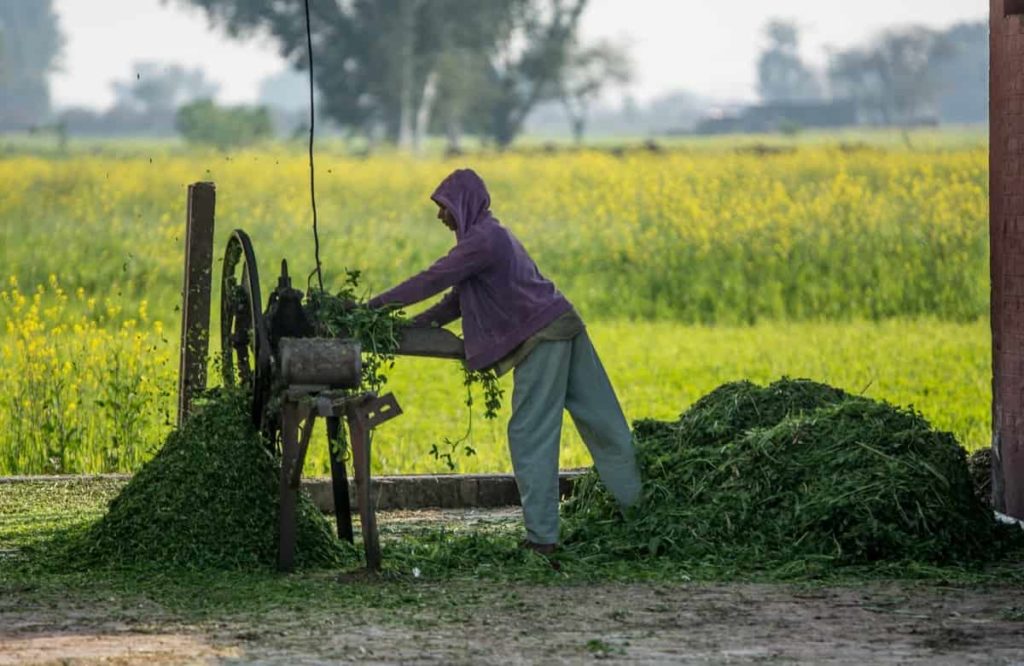Agriculture production in Pakistan is becoming insufficient to cater to the needs of an exponentially growing population. Due to political challenges, institutional deficiencies, and market failures, agriculture policy targets have not been achieved. The farming system is caught up in a vicious cycle of low investments, leading to low productivity, thus creating low business orientations, resulting in low value addition, low profit margins, and low income. It is becoming difficult to escape this brutal cycle with added challenges like climate change, water scarcity, and urbanisation pressure.
A look at past trends indicates that the agriculture sector in Pakistan has been, to a large extent, a victim to a case of policy, institutional, and market failure.
Policy failure is attributed to historical price distortions by implicit taxation of agriculture with unfavourable terms of trade. There have been exceptions for a few years but policy prescription has been very misguided and ad hoc. Antithetical and incomplete policies are yet another cause of policy failure.
 Institutional failure stems from the failure to provide strategic input, especially improved seed varieties, and impeded private sector entry in seed development. Institutional failure is also attributed to marketing inefficiencies, substandard chemicals and fertilisers in the market, and poor post-harvest handling of the produce.
Institutional failure stems from the failure to provide strategic input, especially improved seed varieties, and impeded private sector entry in seed development. Institutional failure is also attributed to marketing inefficiencies, substandard chemicals and fertilisers in the market, and poor post-harvest handling of the produce.
The PML-N has demonstrated a strong commitment to the agriculture sector, particularly evident during its tenure from 2013 to 2018, marking it as a priority sector for Pakistan’s economic growth.
Market failure emanates from treating strategic natural resources such as water and forestry as almost free goods. This implies that crucial social costs (including environmental or damage costs) and benefits are excluded from producers’ and consumers’ budgets, or they remain unaccounted for as unassigned social costs — costs being incurred without clear attribution to any specific entity. A good example is irrigation water, still perceived as a free good to be provided by the public sector through canals. Now, solar tube wells are extracting water like it is coming from a perennial spring, not realising the long-term consequences on the natural water table. Another case is the irrational use of pesticides and fertilisers. In Pakistan, excessive and indiscriminate use of pesticides has affected the natural ecological balance in different agroecological zones, whose financial and economic costs are often unaccounted for.
The PML-N has demonstrated a strong commitment to the agriculture sector, particularly evident during its tenure from 2013 to 2018, marking it as a priority sector for Pakistan’s economic growth. In Punjab, the leadership spearheaded the Punjab Agriculture Policy and Strategy 2017-18 by implementing plans to spur investment and establish a conducive environment to facilitate agricultural transformation.
 In order to improve the agriculture sector performance in Punjab, both the federal and provincial governments made concerted efforts. The Kissan package introduced by the federal government in October 2022 targeted the overall agriculture sector with a special focus on the marginalised, small, landless, and flood-affected farmers.
In order to improve the agriculture sector performance in Punjab, both the federal and provincial governments made concerted efforts. The Kissan package introduced by the federal government in October 2022 targeted the overall agriculture sector with a special focus on the marginalised, small, landless, and flood-affected farmers.
A viable path forward involves modernising the agricultural sector through extensive digitisation. This should be coupled with enhanced monitoring and evaluation of implemented policies.
Broadly, the three dimensions of the Kissan package are,
- agri loans, business loans for subsistence and flood-affected farmers in particular (subsidy on mark-up, waiver on mark-up, increased access to credit, increased volume of the credit),
- fertiliser price reduction (subsidy on imported urea and negotiating DAP prices with stakeholders), and
- mechanisation facilitation (old tractors scheme and new tractors scheme).
There are a few water sector projects as well on the roster.
Capitalising on the powers granted by the 18th Constitution Amendment Bill 2010, the Punjab government implemented policies (AgriPlan 2015, developed under PML-N) that aimed to boost sectoral growth rates, enhance crop yields, improve access to extension services, foster ICT-based agriculture development, and attract greater private investment in the sector. However, such policies need continuity and consistent government support to bear fruit.
Despite strenuous efforts of the policymakers, the agriculture sector still lacks modernised practices, a strong digitisation role, integrated and coordinated policy/efforts, proper monitoring and evaluation of agricultural policies, efficient and productive efforts of agriculture-related government staff, and public-private partnerships/investments in agriculture.
A viable path forward involves modernising the agricultural sector through extensive digitisation. This should be coupled with enhanced monitoring and evaluation of implemented policies, aligning institutional performances with relevant Key Performance Indicators (KPIs). To optimise the efficiency of the agriculture department staff, it is crucial to disengage them from non-productive efforts and assign dedicated tasks. Additionally, embracing value chain and blockchain approaches is imperative for fostering innovation and sustainability in the sector. Otherwise, the upcoming challenges like climate change, water scarcity, and urbanisation will make it near impossible to cater to the needs of growing populations.
The writer is an agriculture policy expert currently serving as country director of J. E. Austin Associates and COO of Agribusiness Support Fund.








